Text
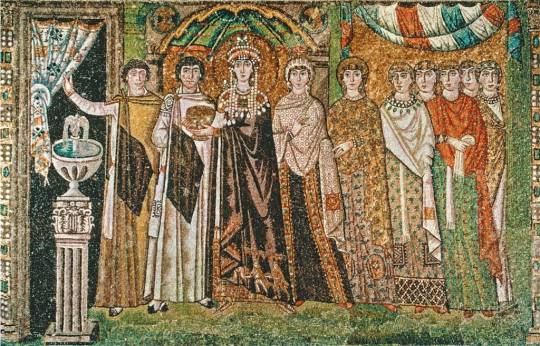
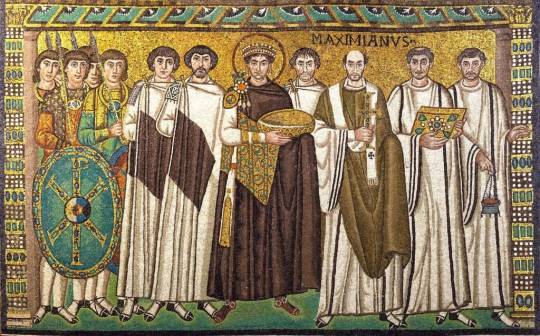
Byzantine Mosaics, San Vitale, circa 526-547 CE, Ravenna, Italy: Empress Theodora and Her Retinue (top) and Emperor Justinian and His Retinue (bottom)
2K notes
·
View notes
Photo
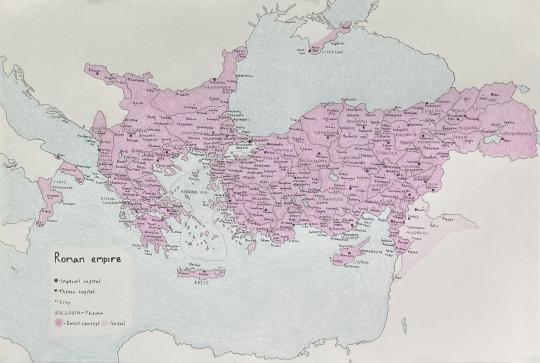
Map of Byzantine empire during mid 11th century
333 notes
·
View notes
Text
The Paramerion Problem
One of the more iconic cultural traits of the Romans and eventually the Byzantines (despite them being directly Roman, I’ll refer to them as Byzantines to avoid confusion) was the distinct ability to adopt the practices and tactics of those that they came across. Some of these are clearly apparent such as the adoption of pants in the form of braccae and others are less apparent. This brings me to point by which I’ve spent numerous hours digging into which is the appearance of the Paramerion in the Byzantine military.

The paramerion, as the weapon seen above, is simply a single-edged slightly curved sword, very reminiscent of later sabres that pop into existence in Europe. The design originates with the Eurasian steppe tribes in the form of a pallasch-like weapon (a straight-ish single-edged sword designed for cavalry use) and spreads to Byzantium by the Avars and to the Islamic Kingdoms through the Khazars.

The Byzantines unabashedly admit that the Avars are a significant influence on their military in 7th-century treatises, namely Maurice’s “Strategikon”. Furthermore, Hungarian graves dated between the 7th and 8th centuries have yielded blades that were characterised by “narrow, shallow-curved blades” (as sourced by Piotr Grotowski in the novel “Arms and Armour of the Warrior Saints” page 358). The problem, however, is the fact that the name “paramerion” does not actually enter Byzantine literature or artistic depiction until the 10th century, leaving us with a gray area of upwards of 300 years. Even worse is the fact that only one, to my knowledge, extant example (of specifically a curved Byzantine sword) has been found and it lies within a private auction, raising numerous red flags for me (sword seen below).

We know for a fact that in the 9th century, this shallow, curved blade spreads up to the Slavic territories north of Byzantium. This can be solely attested to the invading Magyars from beyond the Ural Mountains who relied almost exclusively on observably curved bladed weapons. However, the extent to which the paramerion, without the actual name, was used before the 10th century by the Byzantines is unknown. There seem to be some occurrences of the blades appearing in the Madrid Skylitzes manuscript which depicts 811 CE to 1057 CE.


Unfortunately, more problems arise. Firstly, the manuscript was produced in the early 12th century and secondly, we have no explicit verification of the swords being in use until written manuals in the early 10th century. We know that the curve should only be a slight terminal curve, but very few swords in the manuscript look remotely like that and every observable scabbard is straight.
Things only get easier for the paramerion in the 10th century onward when, as mentioned, multiple treatises mention the usage. Firstly is the Taktica of Nikephoros Ouranos, the second being the Praecepta Militaria by Nikephoros II Phokas, and the third being the anonymous Sylloge Tacticorum. This is also eventually when depictions of curved swords spring majorly into frescoes as seen below.


It seems, for now, as though the mystery behind that 300 year gap will remain unknown until more physical evidence is found. Work continues to solidify a typology classification for many of these underlooked weapons as well.
669 notes
·
View notes
Photo


Byzantine Gilt Silver Bracelet, 9th - Early 13th Century AD
An incredible bracelet made of twisted silver wire and terminating in two hammered flat silver trapezoids that flow from the wire. These are studded with small silver beads and braid.
During the 7th to 9th centuries, the Byzantine Empire was in a state of economic and social crisis, repeatedly rocked by invasions, plagues, famines, and other disasters - a time period often called “The Dark Ages”. Emerging from that period, it seems that the people of the Byzantine Empire wished to flaunt their wealth and embellish themselves with beautiful things. For example, in excavations of Byzantine graves from this period at Thessaloniki, jewelry like this bracelet are the exclusive grave items found with both men and women - but they are found in great quantities. This would have been a treasured item for a person living in this optimistic, dynamic time.
750 notes
·
View notes
Photo
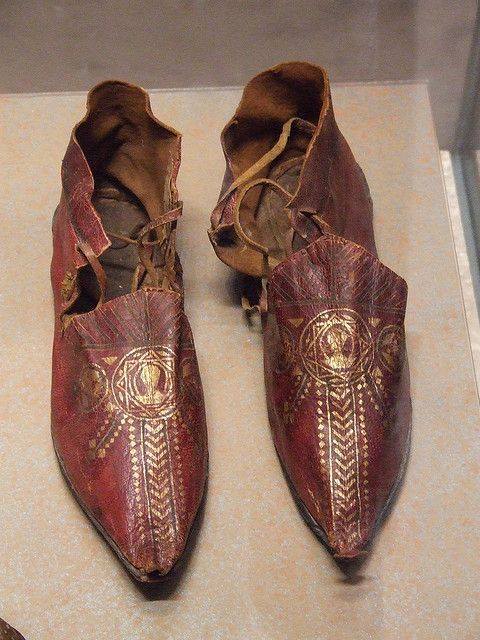
12th-century pointed Byzantine shoes. British Museum of Art.
749 notes
·
View notes
Photo




Jewelled Bracelet (500-700, Byzantine ).
Gold, silver, pearl, amethyst, sapphire, glass, quartz, emerald plasma.
Images and text courtesy The Met.
630 notes
·
View notes
Photo

~ Solidus (Coin) of Empress Irene. Date: A.D. 797-802 Period/Culture: Byzantine, minted in Constantinople Medium: Gold
383 notes
·
View notes
Photo








Byzantine clothing from a Tom Tierney coloring book
The Byzantine Empire, also referred to as the Eastern Roman Empire or Byzantium, was the continuation of the Roman Empire in its eastern provinces during Late Antiquity and the Middle Ages, when its capital city was Constantinople (modern Istanbul, formerly Byzantium). It survived the fragmentation and fall of the Western Roman Empire in the 5th century AD and continued to exist for an additional thousand years until it fell to the Ottoman Turks in 1453. During most of its existence, the empire was the most powerful economic, cultural and military force in Europe. “Byzantine Empire” is a term created after the end of the realm; its citizens continued to refer to their empire simply as the Roman Empire (Greek: Βασιλεία Ῥωμαίων, tr. Basileia Rhōmaiōn; Latin: Imperium Romanum), or Romania (Ῥωμανία), and to themselves as “Romans”.
1. Empress Theodora 2. 5th-century woman in tunic and dalmatic, and man in tunic shirt (tying on his stockings! oo-la-la!) 3. 6th-century nobles: long shirt under tunic, and long shirt under toga 4. 6th-century nobles: man in short mantle over tunic with decorative apron, brocade pants, and phrygian cap; woman in dalmatic and veil 5. Emperor Flavius Arkady (337-408 CE) in shirt under tunic and breastplate, and soldier in linen, leather lorica (breastplate) 6. Emperor Flavius Arkady in tunic and purple mantle, and maid in Persian-style hat, jacket, trousers 7. Justinian’s courtiers, woman in turban 8. Noblewoman and official, tiara with veil attached
2K notes
·
View notes
Photo
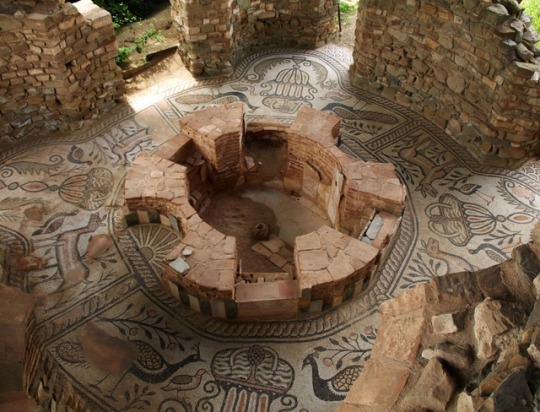
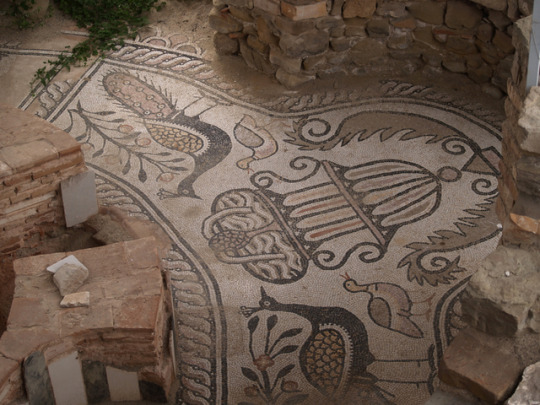
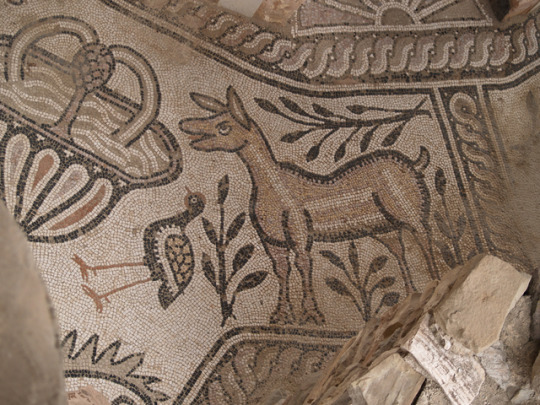
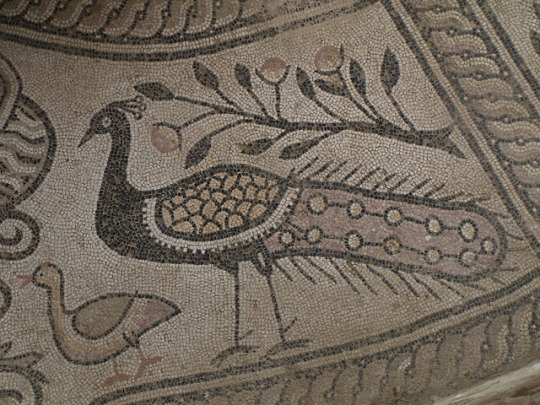
Mosaics from the Episcopal Basilica in Stobi, Macedonia
Byzantine, 5th - 6th century
11K notes
·
View notes
Text

• Icon with Saint Demetrios.
Date: A.D. 950–1000
Culture: Byzantine
Medium: Ivory
267 notes
·
View notes
Photo

Teodora e Giustiniano (oppure Post esame di storia dell’arte medievale be like)
Non avevo un bel ricordo dei “bizantini” (termine molto generico), però col tempo mi sono affezionata.
confronto (il design si ispira ai mosaici di San Vitale, non è accuratissimo ma shhhhh)

86 notes
·
View notes
Photo

Temple Pendant with Two Sirens Flanking a Tree of Life (front) and Confronted Birds (back), Metropolitan Museum of Art: Medieval Art
Gift of J. Pierpont Morgan, 1917 Metropolitan Museum of Art, New York, NY Medium: Cloisonné enamel, gold
http://www.metmuseum.org/art/collection/search/464554
84 notes
·
View notes
Photo

Photograph by Louise Laffon, Marble bust of the Emperor Marcus Aurelius, part of a series of photographs documenting works in the Musée Napoléon III, from the Campana Collection, albumen print, ca.1864
119 notes
·
View notes
Photo

Colonne Serpentine (Serpent column or Delphi tripod at the Hippodrome of Constantinople)
BARTH, Hermann. Constantinople: Ouvrage illustré de 103 gravures, Paris, H. Laurens, 1913.
83 notes
·
View notes
Photo

Europe at the turn of the 11th century.
769 notes
·
View notes


